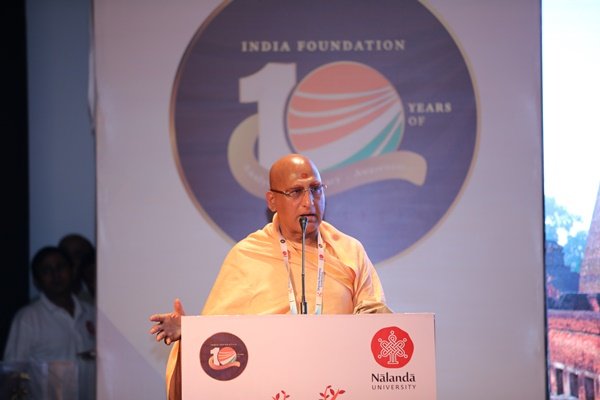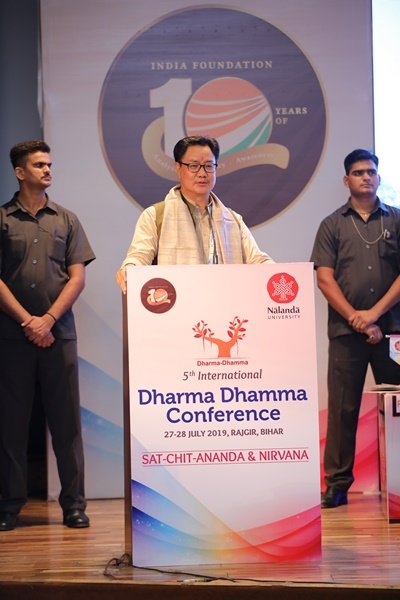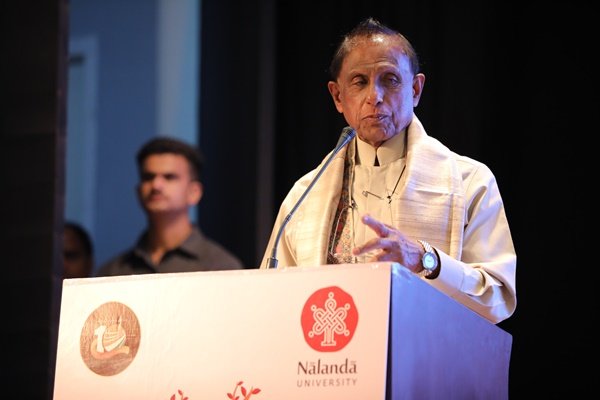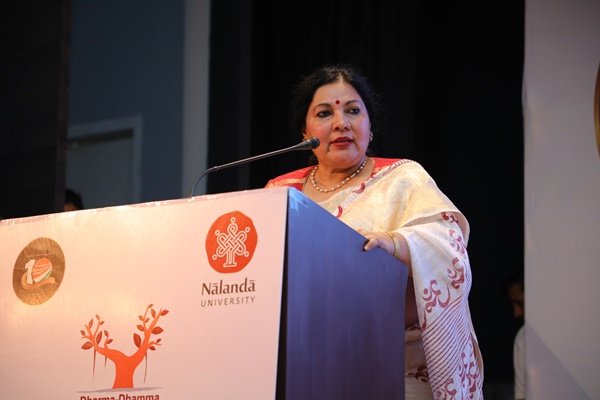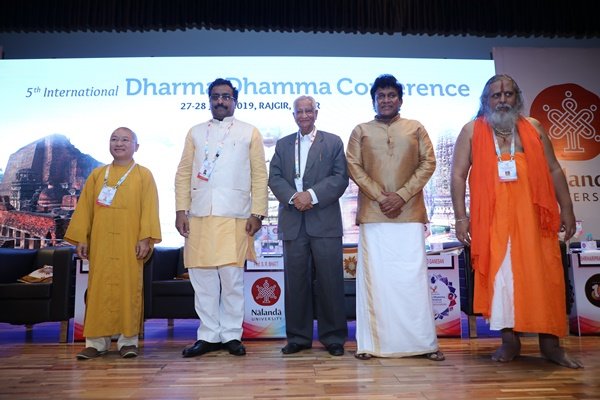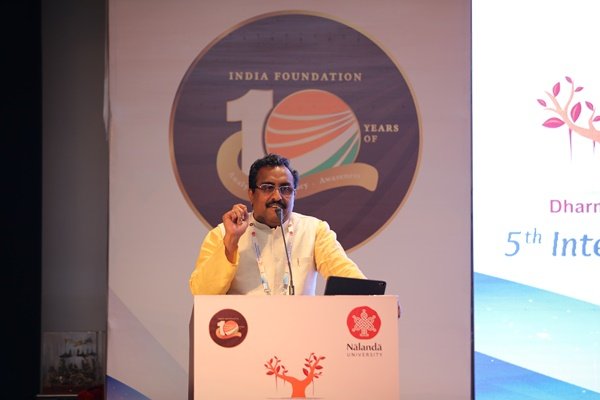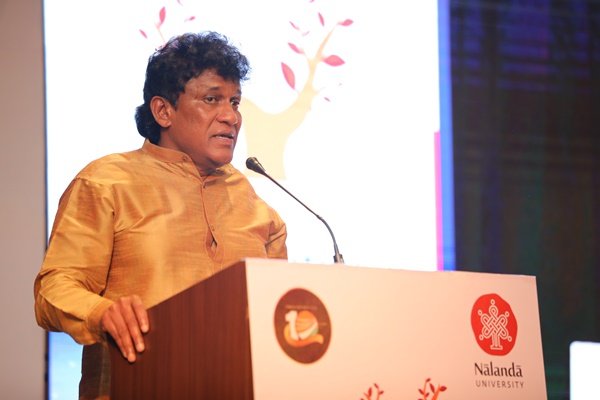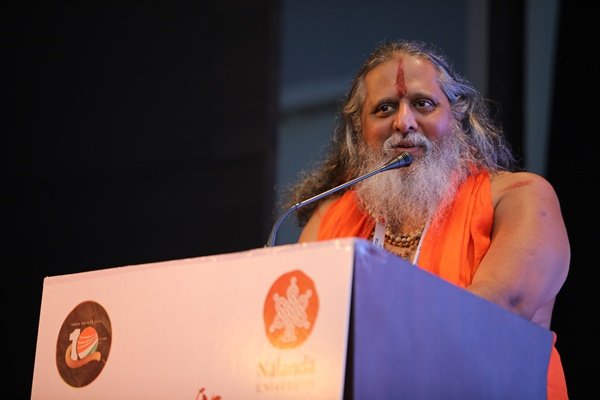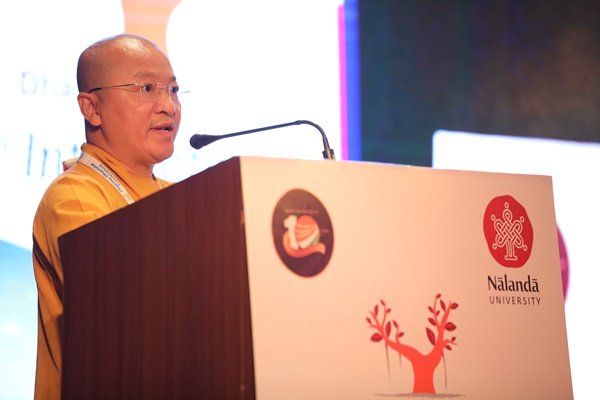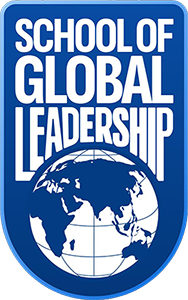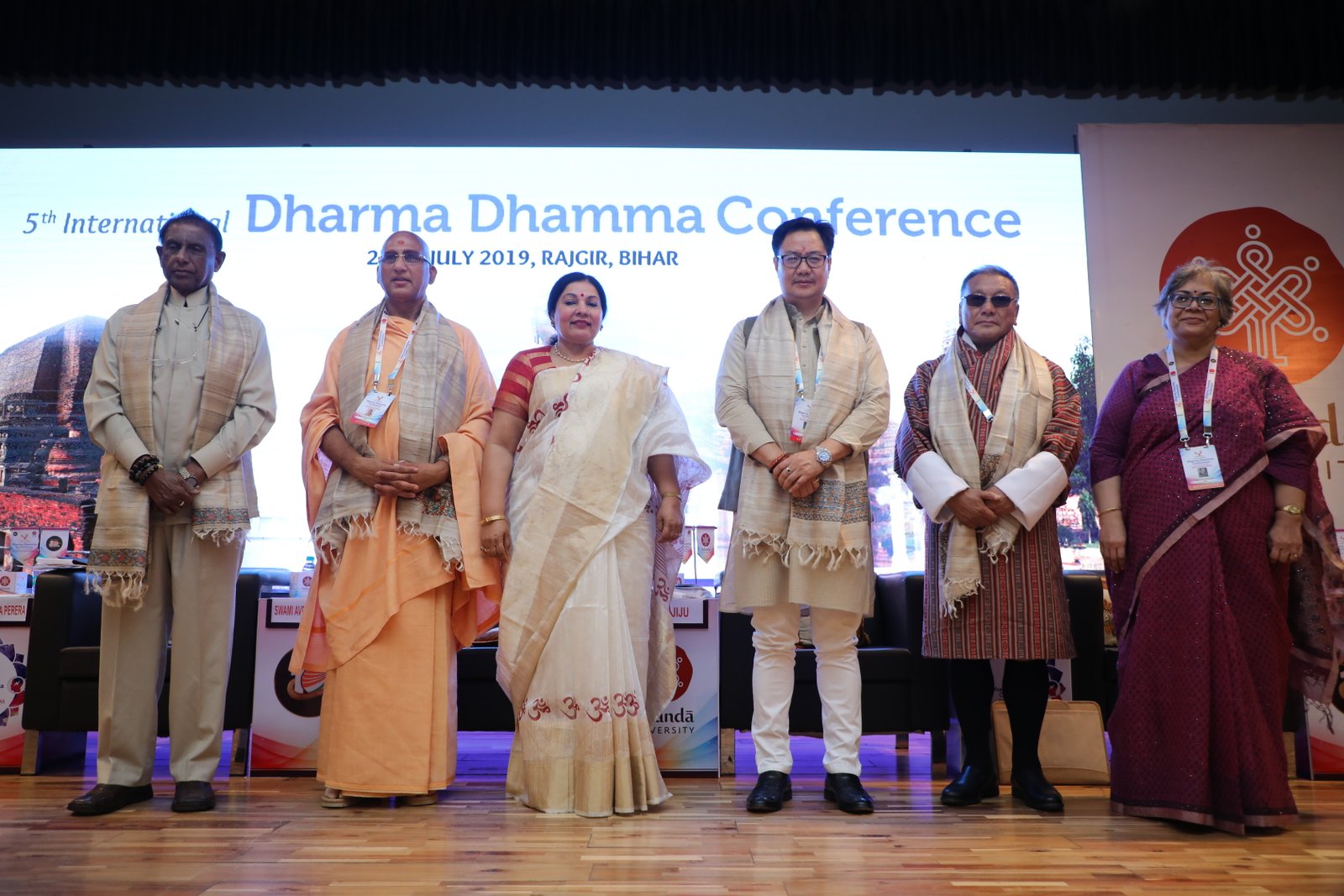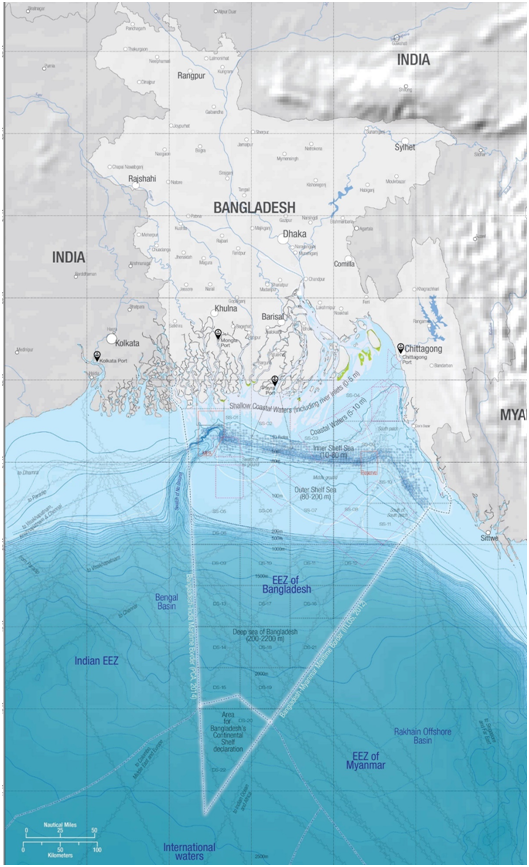They scorched the snake, but could not kill it! In late February this year, US President Donald Trump asserted that the US had defeated “100 percent of the (ISIS) caliphate”[i]. However, many US officials, like National Security Advisor John Bolton, disagreed with him then and acknowledged that the monstrosity was not defeated, but had slithered away into the desert with a large portion of its wealth, weaponry and warriors still intact to fight another day.[ii],[iii]
This fact has been reiterated in a recent report by the US Institute for the Study of War (ISW) that claims that ISIS purposely retreated during the US-led campaign from Mosul, Raqqa, and other important Syrian cities in order to relocate its fighters and their families to remote ‘support zones’ in Iraq and Syria[iv]. Intelligence officials of the US-led international coalition also claim that ISIS currently sits on a “mountain of stolen cash and gold” (estimated by independent experts to total about USD 400 million)[v], which its leaders were able to stash away before ceding territory to international forces.
In fact, far from being vanquished in Iraq and Syria, ISIS is said to be staging resurgence now through a “capable insurgency”[vi]. In addition, the transnational menace has increased its activities in other parts of the world and has even conducted one of its worst terrorist strikes on Easter Sunday in Sri Lanka (21 April 2019), which claimed over 260 lives.
Method in the Mayhem
According to the ISW report, ISIS was quick to asses that it would be difficult to stop Operation Inherent Resolve (OIR) launched by the Combined Joint Task Force (CJTF) from taking over Mosul and then Raqqa back in mid-2017. Therefore, ISIS carefully sidestepped the military juggernaut and focused instead on arranging safe havens for its forces fleeing from the battlefield in remote parts of Iraq and Syria.
Thus, when the US and ISF troops laid a siege on Mosul, they remained unaware that ISIS fighters were already escaping the city by way of a wide and complex network of tunnels.Thus, US military experts aver: “ISIS fighters likely went to ground near Mosul; regrouped in Tel Afar in Iraq or the Middle Euphrates River Valley in Syria; or relocated to Hawija, Iraq”.[vii]
In order to facilitate this process of troop dispersal, ISIS even allowed civilians to leave the cities in large numbers, so that their fighters could blend with the crowds. Specific patterns have been found in the mode of the migrants’ dispersal and destinations, which shows that ISIS “deliberately planted fighters and ideologically committed supporters (among the civilians) across both Iraq and Syria”.[viii]
With the recapture of Mosul and Raqqa, US officials appeared to grow complacent and believed that the ISIS had given up the fight. In October 2017, Lt. Gen. Paul Funk of the US military, then serving as CJTF-OIR commander, surmised: “They’re (ISIS) giving up … [and] their leaders are abandoning them.”[ix] Even the then-secretary of defense James Mattis said: “The caliphate is on the run, we’re breaking them.”[x]
These statements of triumph reflected the initial enthusiasm of CJTF-OIR forces over liberating cities from ISIS control. However, it was only later that the US began to understand the error in its assessment. By February 2018, then secretary of Homeland Security Kirstjen Nielsen noted that ISIS fighters in Syria were “going underground, dispersing to other safe havens, including on the internet, and returning to their home countries.”[xi]
Even the Iraqi government took its eyes off the ball after the recapture of Mosul in late 2017, as its focus shifted towards the referendum conducted by Iraqi Kurdistan Regional Government (KRG) for breaking away from Iraq in September of that year. The crisis disrupted coordination between the Internal Security Forces (ISF) and Peshmerga fighters, which allowed ISIS to regroup and move about along the Disputed Internal Boundaries (DIBs). With his government facing charges of nepotism and corruption, then Iraqi premier Haider al-Abadi hastily declared the victory over ISIS in Iraq on 9 December 2017 as a major achievement of his term in office. He claimed that the ISF had successfully seized the last city held by ISIS in Anbar Province and routed the terror group out of the country.
His administration then got preoccupied with contesting the May 2018 parliamentary elections and got little time to focus on post-ISIS stabilisation. The elections gave a fractured mandate and led to a political deadlock. With growing civil unrest after the elections in provinces of southern Iraq and the city of Basra, Iraqi forces were taken away from ISIS-infested areas in the west of the country. ISIS fighters on the run took full advantage of the situation as they regrouped and planned the launch of a new insurgency.
Thus, it was embarrassing that by December 2018, when Iraqi government was indulging in anniversary celebrations of its ‘victory’ over ISIS, reports were streaming in that members of the supposedly defunct terror group were carrying out guerrilla attacks, bombings, murders, kidnappings and road blockages across various governorates of the country.
Veteran leader of the Kurdish Democratic Party MasoudBarzani issued a dire warning to Iraq around that time: “Da’esh(ISIS) has returned to a lot of the areas much worse than before.”[xii] He then gave names of few of the governorates where ISIS had started spreading its terror—Nineveh, Diyala and Salahuddin. Even Shiite cleric Moqtada al-Sadr warned on twitter: “Mosul is in danger and terrorist cells remain active there”.[xiii] He added that the deteriorating situation has been caused by the misrule of corrupt politicians.
By then, even ISIS had started chiding the international forces about the so-called victory of their forces against the terror group. ISIS spokesman Abu Hassan al-Muhajir reproached in April 2018: “What victory do you speak of oh America, when the mujahidin … [have] a condition that is better than the one from which you fled in Iraq several years ago?”[xiv]
ISIS soon reconstituted its command and control centres, its media apparatus, and its high-end explosive capability along with reorganising its scattered militants to fuel a new insurgency. The terror group even managed to develop an underground global financing network with branches stretching from the Middle East to Africa to Europe. This infrastructure was built during Saddam’s regime to bust sanctions and is known as Al-Rawi Network, which invested “tens of millions” of dollars of ISIS money in real estate, car washes, and other legitimate businesses worldwide.[xv] ISIS ‘wilayahs’ (or global provinces) also started pouring in funds into their headquarters in Syria and Iraq from late 2018 onwards.[xvi] Since then, the terror group has been awash with funds.
Increased VBIED Detonations
Then on August 22, 2018, Baghdadi made an audio announcement marking the commencement of ISIS’ new military campaign in Iraq and Syria. He asserted that the U.S. “boasted of its so-called victory in expelling the State (ISIS) from the cities and countryside in Iraq and Syria, but the land of Allah is wide and the tides of war change.”[xvii]
The message was followed by waves of detonations carried out across Iraq and Syria by Vehicle-Borne Improvised Explosive Devices (VBIEDs). These attacks targeted people in markets and restaurants, particularly in newly liberated cities of Raqqa and Mosul, as well as at military checkpoints and convoys in regions of Iraq and Syria. Later, ISIS repeatedly conducted VBIED strikes in the cities of Mosul, Kirkuk City, Tikrit, Raqqa, and Idlib. With thesenew tactics the terror group was successful in sapping public confidence in the Iraqi and Syrian security forces. By 2019, the scope and scale of VBIED attacks has further increased.[xviii]
The Ingress in Af-Pak
In fact, ISIS kick started a new phase in its global operation from the month of Ramadan in 2019. After conducting the devastating Sri Lanka attacks on 21April, it dubbed its new global campaign as ‘the Battle of Attrition’ on 31May. As part of this campaign, ISIS claimed responsibility for attacks in Iraq, Syria, Afghanistan, Libya, Central Africa, West Africa, Somalia, Pakistan, and the Sinai Peninsula.[xix] It has also announced the creation of three new provinces (wilayah) in Democratic Republic of Congo, India (mainly in Kashmir and Bengal), as well as in Pakistan.[xx]
It is important to note here that the presence of ISIS in Afghanistan (known as ISIS-K, with ‘K’ standing for Khorasan) has further vexed the security situation in that country. According to the report issued by the US Department of Defense issued to Congress in June 2019, ISIS-K has made significant “territorial gains” in the country’s eastern provinces (notably Kunar) between December 2018 and May 2019. The group also carried out a suicide blast at a wedding reception on 17 August 2019 that claimed 80 lives and halted the country’s independence-day festivities.
The ISIS-K is trying to take advantage of an uncertain phase in Afghanistan, when the US is seeking a peace accord with the Taliban for the gradual withdrawal of its troops from the country, which the upstart terror group knows would create power vacuum in various areas and could prove useful in consolidating its positions.
When the group was formed in early 2015, many Afghans dismissed it as an insignificant incipient, led by dissident Tehreek-i-Taliban militant Hafiz Saeed Khan (its chief) and former Afghan Taliban commander Abdul Rauf Aliza (its deputy). However, both these leaders were taken out by the US by air[xxi] and drone strikes,[xxii] almost after a year of the group’s formation. But the group received a boost in 2016 when the Islamic Movement of Uzbekistan (IMU) joined it. To curb its growing menace thereafter, the US dropped the largest non-nuclear bomb (GBU43B Massive Ordinance Air Blast – MOAB) on the group’s cave complex in Achin District in Nangarhar Province on 13 April 2017. The so-called ‘Mother of all bombs’ reportedly killed 36 of ISIS-K fighters and decimated its tunnel network.[xxiii]
ISIS attaches great importance to its presence in Afghanistan because of the region’s historic and religious significance in the jihadist lore. In fact, the modern jihadist movement originated in Afghanistan. A few Hadith sayings purportedly prophesize the rise of an “army of true believers from the Khorasan” before the apocalypse, which ISIS has made central to its eschatological claims.[xxiv] “Operations on the Afghanistan-Pakistan border region also enable ISIS to directly challenge its rival group Al-Qaeda for the leadership of the global jihadist movement.”[xxv]
The ISIS-K makes inroads into Kunar and Nangarhar, it seeks to tap into the frustration of hardline Taliban fighters unimpressed by their leadership’s supposed concessions in negotiations with the US. Therefore, Taliban defectors joining ISIS-K may increase in the months to come.[xxvi]
On the Prowl in Bangladesh
In addition to expanding its influence in the nursery of global jihad—the infamous Af-Pak region, ISIS has increased its prowl on the eastern front of India with its growing footprint in Bangladesh. It is curious that Bangladesh authorities have repeatedly denied the presence of both ISIS and al-Qaeda in their country, despite the fact that these groups have conducted several attacks over the years and taken responsibility for many of them. The most recent of such strikes came as late as 30 August 2019, when two policemen were injured in a blast near the car of a minister in Dhaka. It is believed the bomb was thrown from a footbridge at night, but the minister escaped injury. Hours later, ISIS took responsibility for carrying out the blast.[xxvii]
On 6 August, the Bangladesh unit of ISIS came out with a video titled ‘The Best Outcome is for Pious’, which was released by the Amaq Agency and pro-ISIS Telegram channels. The eight-minute video showed four masked ISIS operatives, two wearing suicide jackets, criticising in Bangla language the current Sheikh Hasina government and the Rapid Action Battalion (RAB) engaged in counter terrorism operations. The speaker ends his speech by calling on Muslims to join ISIS. It is important to note here that ISIS had increased its activities in Bangladesh in the immediate aftermath of the Sri Lanka Easter bombings, when it announced the appointment of a new ‘emir’ (a certain Abu Muhammad al Bengali) to lead its charge in India and Bangladesh towards the end of April this year.[xxviii]
It is worth noting that Bangladesh witnessed the first major ISIS-claimed attack in South Asia, outside of Afghanistan and Pakistan in July 2016. This was the assault on the Holey Artisan Bakery in Dhaka, which killed 22 civilians. With foreigners as the main target, ISIS-Bangladesh claimed responsibility for the attack, which was carried out by the ISIS-affiliated group, Dawlatul Islam, Bengal. The group—consisting of individuals who had defected from Jamaat-ul-Mujahideen Bangladesh (JMB) and Jund at-Tawhidwal-Khilafah—was formed in 2015 and led by Muhammad Saifullah Ozaki, a Bangladeshi-Japanese individual whose current whereabouts are unknown. Ozaki is reported to be the leader of ISIS-Bangladesh. Curiously, despite ISIS’s claim, the Bangladesh government back then denied that the Dhaka attackers had any connection with ISIS, and alleged that they were instead members of a breakaway group of JMB.[xxix]
Inroads into Sri Lanka, Maldives
Even as Sri Lanka hobbles towards normalcy, after a four month long emergency rule following the devastating Easter Sunday attack on 21 April 2019 that killed over 260 lives is revoked, investigations into the first ISIS attack on the country continue. The ISIS attack were themselves followed by rioting in the country’s North Western Province that destroyed hundreds of Muslim properties. The fear is ISIS might seek to exploit resentment after these mob attacks blamed on Buddhist extremist groups against the Muslim community, which constitutes 10 percent of the island state’s population, to spread its tentacles in the country.[xxx]
The Sri Lankan government has stated that the eight suicide bombers which carried out the bombings belonged to two local Islamist groups—National ThowheedJamaath (NTJ), led by ZahranHashim, and JamatheiMillathu Ibrahim (JMI). According to authorities, those directly responsible for the bombings have been killed or arrested.[xxxi]
The picture from the island paradise of Maldives is quite disconcerting when it comes to growing resonance of the ISIS message among its population. According to the Soufan Group report, the small country with a population of just over 400,000 surprisingly found 200 of its youth migrating to ISIS territory in Iraq and Syria, a number surpassing other regional countries — India, Pakistan, Sri Lanka and Bangladesh with far larger Muslim populations.[xxxii]
The Rising Threat for India
As demonstrated above, ISIS on its comeback trail is seeking to increasingly focus on the Indian subcontinent. With its third largest population of Muslims in the world, India appears an attractive catchment areas for the global jihadist group to swell its ranks. In the words of CNN journalist Tim Lister: “Its propaganda suggests ISIS sees India as promising territory and is intent on aggravating Muslim-Hindu tensions there.”[xxxiii] For this purpose, ISIS announced the formation of an exclusive province of its fictitious caliphate in India (Wilayat-al Hind) on 10 May 2019[xxxiv] and has since increased its focus in Jammu and Kashmir, West Bengal and Assam, as well as in southern states of Kerala, Tamil Nadu and Karnataka.
It is noteworthy that the ISIS statement about the establishment of its exclusive province in India corresponded with a police report that a militant affiliated to a transnational group named Ishfaq Ahmad Sofi was killed in an encounter in Shopian the very day.[xxxv]The Islamic State announced in early February 2016, its intention to expand into Kashmir as part of its broader Khorasan branch.[xxxvi] The presence of Islamic State in J&K progressed gradually during 2017. Islamic State flags have been waved during rallies and protests around the valley. While this claim is still pending official verification, Islamic State’s Amaq news agency claimed responsibility for an attack in Srinagar on November 17, 2017, which killed an Indian policeman. The terrorist killed in the attack, Mugees Ahmed Mir, is suspected to have been inspired by the Islamic State’s online propaganda and was found wearing an Islamic State T-shirt at the time of the attack.[xxxvii]Since late 2017, the pro-Islamic State J&K-focused media group al-Qaraar has engaged in a social media campaign, directing messages tailored to inspire a Kashmiri audience.
In December 2017, a pro-Islamic State video in Urdu was shared via its Telegram channel, using the hashtag “Wilayat Kashmir,” in which a masked man representing “Mujahidin in Kashmir” pledges allegiance to the Islamic State and specifically invites al-Qaeda-affiliated group AnsarGhazwat-ul-Hind to join the caliphate.[xxxviii]
According to a media report, in its publication (‘Amaq’ November 2018), ISIS claimed responsibility for the attack on a police post at Zakura on the outskirts of Srinagar, on November 17.[xxxix] In this incident, one militant, Mugees Ahmad Mir and a J&K policeman were killed in a shootout on November 16 at Zakura. Mir was wearing a black T-shirt with IS stamp and later at his funeral, his body was wrapped in a black flag. Police sources were quoted in the media report that Mir was actually a district commander of Tehreek-ulMujahideen and was loyal to the now deceased AnsarGhazwat-ul-Hind commander Zakir Musa.
When it comes to the spread of ISIS influence in south India, it should be noted that the mastermind of the Sri Lanka Easter bombings HashimZahran had travelled to India, Maldives and Gulf states to spread the following of his group National ThawheedJamaath (NJT). In India, “his sojourns were mostly in the Malappuram District of Kerala and the Coimbatore, Trichy, Thirunelveli, Vellore, Nagapattinam, Kanyakumari and Ramanathapuram districts of Tamil Nadu. All these districts have sizeable Muslim populations. He openly advocated the ISIS cause in these places and canvassed for volunteers to join the fighting forces of ISIS. It is during this time that Zahran came to the attention of Indian intelligence services”.[xl]
Since the Easter Sunday bombings, India’s National Investigation Agency (NIA) adroitly foiled a suicide attack in Kerala by arresting an ISIS suspect who was inspired by the blasts in Sri Lanka. Since then, the NIA has busted a suspected module and arrested several ISIS suspects in Kerala and Tamil Nadu.[xli]
Civil Discord: The Subtext of Terror
With the end of the territorial caliphate, ISIS has redoubled its efforts to carry out terrorist attacks across the globe and seems keen on increasing its footprint in populous countries with large Muslim populations, such as India. More than causing terror, ISIS has perfected the art of carrying out attacks aimed at polarising societies by seeding discord through the subtext of its violent messaging. Terrorism is a form of non-verbal communication and ISIS sent a sick message by choosing an Easter Sunday to demonstrate its resurrection in order to tease its prime enemy, “the Crusading Christian forces”.[xlii] Easter also represents the “Christian doctrines that Islam manifestly rejects: that Christ was crucified and died; that he was resurrected; and that by special virtue of the latter, he is the son of God”.[xliii]
Similarly, ISIS killed a Muslim Jordanian pilot by fire, a mode of punishment prohibited in Islam but used only by Imam Ali against apostates, which ISIS repeated to draw Shiite ire.[xliv] ISIS claims that it learnt this tactics of ‘nikayah’ (emotional injury) from its ideological mentor Abu Musab al Zarqawi, who had claimed to have perfected the technique and may have even masterminded the 2006 al-Askari Shrine bombing (where the 10th and 11th Shia Imams Ali al Hadi and his son Hasan al Askari are buried) to incite a civil war between Iraq’s Shiites and Sunnis.[xlv] ISIS’ magazine Dabiq explains and extols the dubious benefits of this tactics of creating civil discord, thus:
“Shaykh Abu Mus’ab (rahimahullah) implemented the strategy and required tactics to achieve the goal of Khilafah without hesitation. In short, he strived to create as much chaos as possible … He would order to carry out nikayah operations dozens of times in a dozen areas daily, targeting and killing sometimes hundreds of apostates from the police forces and Rafidah. In addition to that, he tried to force every apostate group present in Iraq into an all out war with Ahlus-Sunnah (Sunnis). So he targeted the Iraqi apostate forces (army, police, and intelligence), the Rafidah (Shia markets, temples, and militias), and the Kurdish secularists (Barzani and Talabani partisans). In his speech titled “HadhaBayanullin-Nasiwa li YundharuBih” (This Is a Declaration for the People That They May Be Warned by It), he threatened war on any Sunni tribe, party, or assembly that would support the crusaders.
Then when some so-called ‘Islamists’ entered into the democratic political process – ignoring what it entails of clearcut major ‘shirk’ (worshipping someone besides Allah) – he officially declared war on them in his speech titled ‘Wa li TastabinaSabilul-Mujrimin’ (And Thus the Way of the Criminals Becomes Evident).”[xlvi]
When one looks at the aftermath of the Sri Lanka Easter bombings, we find that the social hostility and sectarian violence that followed the blasts put a strain on the social fabric of the country. The above text shows that ISIS plans civil discord through its attacks in its bid to turn a peaceful nation into a radical and polarised society, which could then become a hotbed for its radicalisation and terrorist activities.
The tactics of ‘nikayah’ will play a key part in the strategy of attrition that Baghdadi declared in his last video release. When it comes to India, it is important that security forces and the general public remain alert not only about the physical threat posed by ISIS terror attacks, but also the underlying provocation and trauma it entails. A concerted anti-radicalisation and counter-radicalisation campaign needs to be launched to immunise vulnerable communities and sections of Indian society. In this regard, the development and propagation of a national ethical code to create socially responsible citizenry may help in combating the threat of terrorism and its plans to cause civil unrest.
A closer and more cohesive society, where Muslim citizens play a key role as the bulwark against trans-national terrorism, will be of immense significance. Greater coordination between our security forces and intelligence agencies of neighbouring states like Afghanistan, Bangladesh, Maldives, the UAE etc. could prove critical in thwarting the resurgent threat of ISIS and other jihadist groups lurking on the horizon.
*Dr Adil Rasheed is Research Fellow at Institute for Defence Studies and Analyses (IDSA). He is author of the book ISIS: Race to Armageddon
Endnotes
[i]‘ ISIS is not defeated. Neither Trump nor Democrats should pretend it is’, The Post’s View (Opinion), Washington Post, 10 August 2019 (https://www.washingtonpost_from_the_posts_editorial_board/?ref=readnext)
[ii]Sonmez, Felicia. ‘“ISIS threat will remain” John Bolton says’, Washington Post, 10 March, 2019 (https://www.washingtonpost.com/politics/the-isis-threat-will-remain-john-bolton-says/2019/03/10/8e28290c-4340-11e9-8aab-95b8d80a1e4f_story.html)
[iii] Lister, Tim. ‘Destroyed on the battlefield, ISIS begins new chapter of terror’, CNN, 1 May 2019, https://edition.cnn.com/2019/04/28/world/isis-sri-lanka-international-threat-intl/index.html
[iv]Cafarella, Jennifer with Wallace, Brandon and Zhou Jason. ‘ISIS’S Second Comeback: Assessing the Next ISIS Insurgency’, Institute for the Study of War, Washington DC, June 2019 (http://www.understandingwar.org/sites/default/files/ISW%20Report%20-%20ISIS%27s%20Second%20Comeback%20-%20June%202019.pdf)
[v] Warrick, Joby. ‘Retreating ISIS army smuggled a fortune in cash and gold out of Iraq and Syria’, The Washington Post, 21 December 2018 (https://www.washingtonpost.com/world/national-security/retreating-isis-army-smuggled-a-fortune-in-cash-and-gold-out-of-iraq-and-syria/2018/12/21/95087ffc-054b-11e9-9122-82e98f91ee6f_story.html)
[vi] Ibid
[vii] “Security Official: Birth of an Organization Close to ISIS and Al Qaeda in Hawija,” Shafaaq, June 4, 2017
[viii]Cafarella, Jennifer with Wallace, Brandon and Zhou Jason. n4
[ix] Michaels, Jim. “1,000 ISIS Militants Surrender as Iraq Retakes Key Town of Hawija,” USA Today, October 5, 2017 (https://www.usatoday.com/story/news/world/2017/10/05/1-000-isis-militants-surrender-iraq-wins-islamic-state-loses-key-iraqi-town-1-000-militants-surrende/736901001/)
[x]Garamone, Jim. “Mattis Says Operations Against ISIS Will Change in 2018,” U.S. Department of Defense, December 29, 2017 (https://www.defense.gov/Newsroom/News/Article/Article/1406064/mattis-says-operations-against-isis-will-change-in-2018/)
[xi] Schmitt, Eric. “Thousands of ISIS Fighters Flee in Syria, Many to Fight Another Day,” New York Times, February 4, 2018, https://www.nytimes.com/2018/02/04/world/middleeast/isis-syria-al-qaeda.html
[xii]Nowzad, Kosar. ‘Fight against Islamic State harder after military defeat: MasoudBarzani’, Kurdistan 24, 28 November 2018, https://www.kurdistan24.net/en/news/48c42da8-7812-4fcb-a842-7639e94e3605
[xiii] Al Droubi, Mina. “Iraqi cleric Moqtada Al Sadr warns of ISIS resurgence in Mosul”, Reuters, 21 November 2018 https://www.thenational.ae/world/mena/iraqi-cleric-moqtada-al-sadr-warns-of-isis-resurgence-in-mosul-1.794389
[xiv] “IS Spokesman Disputes Trump Narrative that Group is Defeated, Threatens Iraqi Elections,” SITE Intelligence Group, April 22, 2018 (https://ent.siteintelgroup.com/Multimedia/is-spokesman-disputes-trump-narrative-that-group-is-defeated-threatens-iraqi-elections.html)
[xv] The U.S. Treasury Department imposed sanctions against the Al-Rawi Network in December 2016. However, it has remained operational. Warrick, Joby. “Retreating ISIS Army Smuggled a Fortune in Cash and Gold Out of Iraq and Syria,” Washington Post, December 21, 2018,
[xvi] Office of the Inspector General, “Operation Inherent Resolve and Other Overseas Contingency Operations: October 1, 2018 – December 31, 2018,” U.S. Department of Defense, February 5, 2019,
[xvii] “IS Leader Vows ‘Dark Days’ to the Enemy, Incites for Lone-Wolf Attacks in West, and Muslims to Rise Up in Jordan and Saudi Arabia,” SITE Intelligence Group, August 22, 2018 https://news.siteintelgroup.com/Jihadist-News/is-leader-vows-dark-days-to-enemy-incites-for-lone-wolf-attacks-in-west-and-muslims-to-rise-up-in-jordan-and-saudi-arabia.html
[xviii]Cafarella, Jennifer with Wallace, Brandon and Zhou Jason. n4
[xix] “IS Launches ‘Battle of Attrition’, Claims Killing 18 Regime Elements in Deirez-Zour and Homs,” SITE Intelligence Group, June 1, 2019 https://news.siteintelgroup.com/Jihadist-News/is-launches-battle-of-attrition-claims-killing-18-regime-elements-in-deir-al-zour-and-homs.html
[xx] Robert Postings, ‘ISIS announces new India and Pakistan provinces, casually breaking up Khorasan’, The Defence Post, 15 May 2019 https://thedefensepost.com/2019/05/15/islamic-state-pakistan-province-al-hind/
[xxi]“Top ISIS commander killed in U.S. airstrike in Afghanistan”. BNO News. 12 August 2016 https://bnonews.com/news/index.php/news/id5030
[xxii]“Afghanistan drone strike ‘kills IS commander Abdul Rauf'”. BBC News. 9 February 2015. https://www.bbc.com/news/world-asia-31290147
[xxiii] Cooper, Helene &Mashal, Mujib. ‘U.S. Drops “Mother of All Bombs” on ISIS Caves in Afghanistan’, New York Times (April 13, 2017). https://www.nytimes.com/2017/04/13/world/asia/moab-mother-of-all-bombs-afghanistan.html
[xxiv] “Misappropriating the Black Flag,” Quilliam Foundation, December 16, 2014; McCants, William. “How ISIS Got Its Flag,” The Atlantic, September 22, 2015, https://www.quilliaminternational.com/misappropriating-the-black-flag/
[xxv]Gambhir, Harleen. ‘ISIS in Afghanistan: Backgrounder’, Institute for the Study of War, 3 December 2015 http://www.understandingwar.org/sites/default/files/ISIS%20in%20Afghanistan_2.pdf
[xxvi] Paul Lushenko, ‘ISKP: Afghanistan’s New SalafiJihadism’ Middle East Institute, 19 October, 2018. https://www.mei.edu/publications/iskp-afghanistans-new-salafi-jihadism
[xxvii] ‘Two policeman injured in ISIS attack targeting Bangladesh minister in Dhaka’, The Hindu, 1 September 2019 (https://www.thehindu.com/news/international/2-policemen-injured-in-isis-attack-targeting-bangladesh-minister-in-dhaka/article29314343.ece)
[xxviii] ‘ISIS plans to carry out attacks in India and Bangladesh, appoints new “emir” for the region’, International Business Standard, 1 May 2019, (https://www.business-standard.com/article/current-affairs/isis-threatens-to-carry-out-attacks-in-india-bangladesh-names-new-emir-119050100141_1.html)
[xxix]TasneemKhaleel, ‘Meet the Mastermind of the Holey Attack’, Dhaka Tribune, 25 July 2017 (https://www.dhakatribune.com/bangladesh/crime/2017/07/25/holey-attack-mastermind)
[xxx] ‘Sri Lanka Ends Emergency Rule Imposed after Easter bombings’, AlJazeera, 23 August 2019, (https://www.aljazeera.com/news/2019/08/sri-lanka-ends-emergency-rule-imposed-easter-bombings-190823134350525.html)
[xxxi]Viraj Solanki, ‘The Increasing Presence of ISIS in South Asia’, IISS, 1June 2019, (https://www.iiss.org/blogs/analysis/2019/06/isis-south-asia)
[xxxii]Siddhartya Roy, ‘The Maldives: The New Kid on the Islamist Block’, The Diplomat, 4 March 2019 (https://thediplomat.com/2019/03/the-maldives-the-new-kid-on-the-islamist-block/)
[xxxiii] Lister, Tim. ‘Destroyed on the battlefield, ISIS begins new chapter of terror’, CNN, 1 May 2019, https://edition.cnn.com/2019/04/28/world/isis-sri-lanka-international-threat-intl/index.html
[xxxiv] ‘Islamic State claims ‘province’ in India for first time after clash in Kashmir’, Reuters, 11 May 2019 https://in.reuters.com/article/india-kashmir-islamic-state/islamic-state-claims-province-in-india-for-first-time-after-clash-in-kashmir-idINKCN1SH07Z
[xxxv] Ibid
[xxxvi]Praveen Swami, “Islamic State threatens to Expand to Kashmir,” Indian Express, February 3, 2016.
[xxxvii]“IS claims Zakura Attack,” Tribune (India), November 20, 2017. https://www.tribuneindia.com/news/is-claims-zakura-attack/500289.html
[xxxviii]“Kashmiri group pledges allegiance to Islamic State,” BBC Urdu, December 26, 2017.
[xxxix] ‘Islamic State claims responsibility for attack near Srinagar, J&K police rule it out,’ Indian Express, November 20, 2017, https://indianexpress.com/article/india/islamic-state-claims-responsibility-for-attack-near-srinagar-jk-police-rule-it-out-4945506/
[xl]Karmon, Ely (Dr.). ‘The Sri Lanka Jihadist (ISIS?) Attacks: How Real the Change’, International Institute for Combating Terrorism, May 2019, https://www.ict.org.il/Article/2383/The_Sri_Lanka_Jihadist__Attacks#gsc.tab=0
[xli] ‘NIA questions more Tamil Nadu ISIS terror suspects in Kerala’, My Nation, 1 September 2019, https://www.mynation.com/india-news/nia-questions-more-tamil-nadu-isis-terror-suspects-in-kerala-px5dre
[xlii] Ishaan Tharoor, ‘ISIS calls for holy war find an echo in pro-Trump movement’, Washington Post, 16 Nov. 2016, https://www.washingtonpost.com/news/worldviews/wp/2016/11/16/isis-wants-to-fight-a-holy-war-so-do-some-trump-supporters/
[xliii] Raymond Ibrahim, ‘Why is Easter a Magnet for Islamist Violence’, Middle East Forum, 17 April 2017, https://www.meforum.org/6648/easter-islamist-violence
[xliv]‘Experts React to ISIS’s Gruesome Execution of Jordanian Pilot’, The Rand Blog, February 4, 2015, https://www.rand.org/blog/2015/02/experts-react-to-isiss-gruesome-execution-of-jordanian.html
[xlv]Michael Crowley, ‘How the Fate of One Holy Site Could Plunge Iraq Back into Civil War’, TIME magazine, 26 June 2014, https://time.com/2920692/iraq-isis-samarra-al-askari-mosque/
[xlvi]Dabiq Issue 1 (1435, Ramadan) : From Hijrah to Khilafah, can be accessed at http://www.clarionproject.org/news/islamic-state-isis-isil-propaganda-magazine-Dabiq
